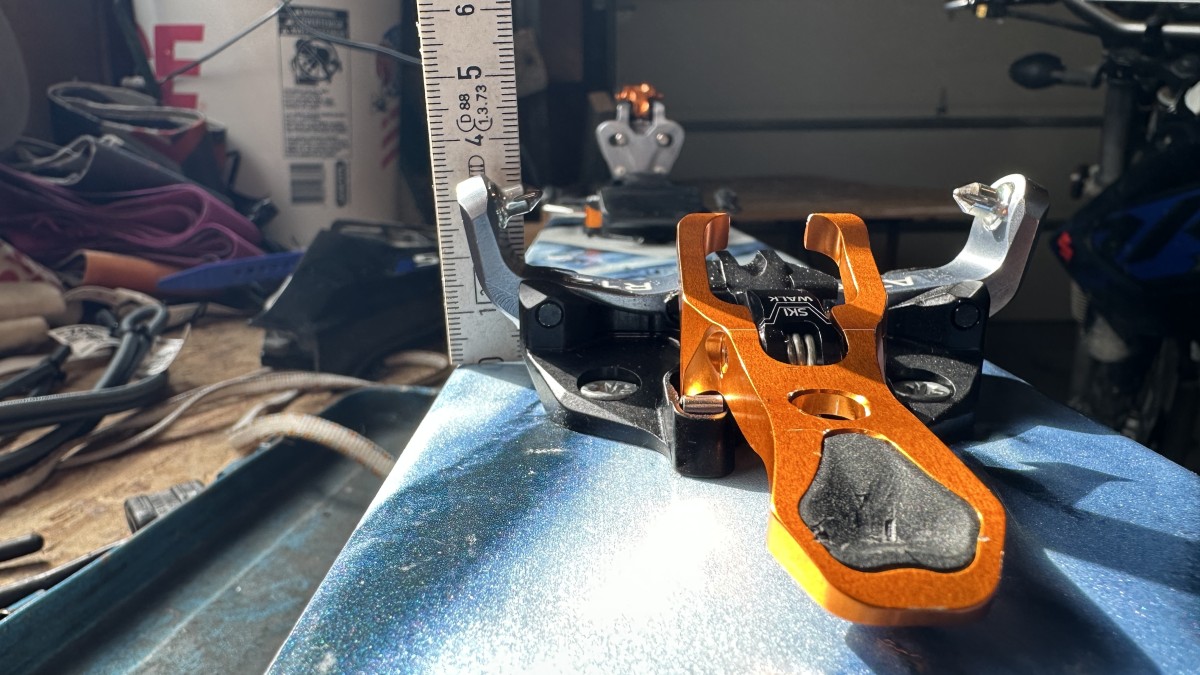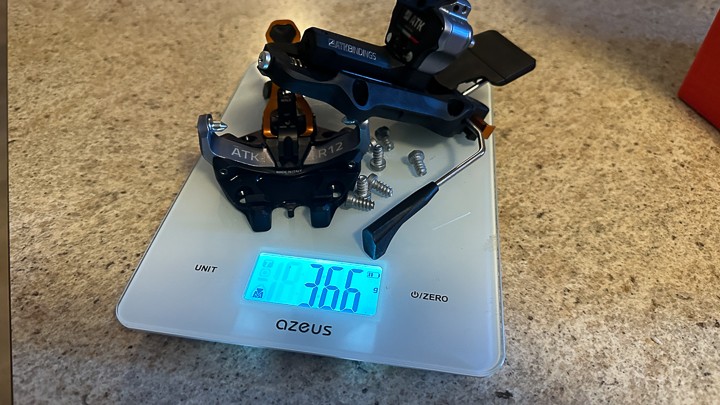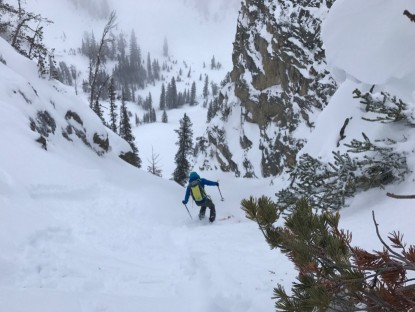Our Verdict
Compare to Similar Products
 This Product
Black Diamond ATK Raider 12 | |||||
|---|---|---|---|---|---|
| Awards | |||||
| Price | $700 List $662.99 at Amazon | $800 List $519.96 at Evo | $600 List | $346.49 at Amazon Compare at 2 sellers | $299.98 at Backcountry Compare at 3 sellers |
Overall Score  |
|||||
| Star Rating | |||||
| Bottom Line | For the weight, these bindings cram in all the important features in innovative and usable fashion | If you truly need more performance features than this lightweight binding provides, you fall into a tiny sliver of skiers at the hard-charging end of the spectrum | Ultralight bindings with broadly adjustable release values | Through all the turmoil, its lineage remains reliable, simple, and affordable | Tours okay and skis downhill very well, it has all the downhill performance and design attributes you seek |
| Rating Categories | Black Diamond ATK R... | Atomic Backland Tour | Dynafit Superlite 150 | Dynafit Speed Turn | Marker Duke PT 12 |
| Weight (35%) | |||||
| Downhill Performance (25%) | |||||
| Touring Performance (20%) | |||||
| Ease of Use (15%) | |||||
| Durability (5%) | |||||
| Specs | Black Diamond ATK R... | Atomic Backland Tour | Dynafit Superlite 150 | Dynafit Speed Turn | Marker Duke PT 12 |
| Weight (pounds for pair) | 1.61 | 1.26 | 0.79 | 1.63 | 5.38 |
| Weight of one binding and screws. Lightest possible configuration w/o brakes (in grams) | 366 | 286 | 179 | 370 | 1219 |
| Weight of 2 bindings Multiple options are noted where we have tested multiple options. (in grams) | 732 | 572. 770 with brakes | 358. 492 with adjustment plate | 740 | 2438 |
| Release value range | 5 to 12 | Men, "Women", "Expert" | 4 to 13 | 4 to 10 | 4 to 12 |
| Stack height: average of toe and heel pin height (in mm) | 37 | 37 | 36 | 38 | 42 |
| Toe/heel delta: difference in height between heel pins and toe pins (in mm) | 12 | 10 | 10 | 17 | 14 |
| Brakes? | Yes | Optional | Optional | No | Integrated |
| Brake width options | 86, 91, 97, 102, 108, 120 mm | 80, 90, 100, 110, 120 mm | 75, 90, 105 mm | N/a | 100, 125 mm |
| ISO/DIN Certified? | No | No | No | No | Yes |
| Ski Crampon compatible? | Yes. "Standard" style. Not all crampons will be cross-compatible | Yes. "Standard" style. Not all crampons will be cross-compatible | Yes. "Standard" style. Not all crampons will be cross-compatible | Yes. "Standard" style. Not all crampons will be cross-compatible | Yes. Marker Duke PT specific. |
Our Analysis and Test Results
The ATK Raider 12 takes many of the features from a basic touring binding and refines them into a proven high-performance form. Relative to their function, they are very lightweight at 366 grams per binding. The Raider includes adjustable retention and release in three different directions, 25 mm of fore-aft heel piece adjustment, three well-graduated heel lifters, the most reliable lightweight brakes we've tested, a spring-loaded heel piece for improved retention, and an integrated ski crampon hook.
Performance Comparison
Weight
Each foot of the ATK Raider 12 – on our scale and including the screws – weighs 366 grams. (In many situations, screw weight is not included the marketed weight, which is weird; try using your bindings without screws. One argument is that all bindings use screws, but not all bindings use the same number or length of screws. So we weigh bindings with screws). There are certainly lighter bindings, and there are even lighter-weight bindings that include all of the same features as the Raider 12. However, none of these other bindings include features as well refined as these superior bindings.
Of course, you could also opt for heavier bindings. Go heavier and you eventually earn more robust downhill performance thanks to increased retention, release, and power transfer. But to do any better than the Raider 12 in this regard, you will have to tack on over 100 grams per binding. Even then, the gains are marginal, and you won't gain any more durability or touring performance.
Downhill Performance
The downhill performance of a ski binding is assessed from two different perspectives. Mainly, and most importantly, we ask our amazing test team to use the bindings over hundreds of thousands of vertical feet of varied backcountry ski terrain. In that context, we look for retention and feel for release characteristics. Even after the high volume of testing, the discerning skiers on our team don't report much variation among modern, lightweight touring bindings. That said, everyone liked their tactile experience with the ATK Raider 12. "Smooth" is a descriptor that was used commonly to describe this binding.
As compared to other bindings on the market and in our test fleet, we have to attribute the "smooth" feel to two different subtle features. First, and likely the primary determinant, is the heel piece "elasticity." The classic lightweight design accommodates ski flex (and therefore the distance between toe and heel pins) by including a gap between the back of the boot and the binding. The heel pins slide in and out of the boot to adjust as the ski flexes, thus lending "elasticity" to the binding.
Other bindings, especially in recent years, mount the heel piece on a sliding, spring-loaded track. The heel piece moves back and forth on that track as the ski flexes underfoot. Most of these bindings with mobile heel pieces are configured with a "zero gap" between the boot and the heel piece. This makes for easy adjustments and suggests a degree of "forward pressure" – just like your regular resort bindings provide.
However, none of these other bindings are eliciting that "smooth" feedback that our test team commented on with the Raider 12. The difference between the Raider and other current touring bindings is that it features a gap and a sprung heel piece. We should also enumerate the features that could, theoretically, add up to the downhill performance of this binding. Relative to others, it has a wider footprint for a mountain pattern. Although these bindings aren't TUV certified to the DIN/ISO standard, the adjustable release values crank all the up to 12. Heel release is adjustable in both lateral and vertical directions – again, very few lighter-weight bindings have a two-way adjustable heel piece. Whatever the reason, all of these nuanced features add up to a lightweight binding that offers serious downhill performance.
Touring Performance
Touring performance is a function of heel lifters, icing resistance, and the range of motion for the toe pivot. The Raider 12 offers nothing particularly remarkable in these ways. The heel lifters are smart: magnetically actuated with an even grade between the three of them, and easily deployed by hand or with a ski pole basket. The toe piece offers a full range of motion, and icing is no more or less of an issue than on other bindings of this profile. The main difference in design is that the toe piece springs are inside the toe pin "wings." Ostensibly, this is to slow or prevent icing. It doesn't hurt, but it also doesn't seem to make a huge difference.
But let's discuss the adjustment screw on the toe piece. Right in the center of the toe piece is a small silver screw that can be turned from Soft to Mid to Hard. It sure looks like a release value or retention dial, but it isn't. It doesn't change spring tension and has no bearing on the toe piece in downhill mode. Instead, it slightly tweaks the distance between the toe pins when the front lever is locked (as in touring mode). This is important because boots vary slightly over time; pin fittings and toe pins wear ever so slightly, though not at the rate you might expect. It appears that ATK has pioneered an important innovation, but the catch is that this function has been included in touring bindings for a long time. Any touring bindings with multiple "clicks" in the toe lever lock have those different settings to accommodate different pin closure distances. What the Raider 12 features doesn't hurt, but it isn't the revolution it is made out to be in marketing materials.
Ease of Use
In assessing ease of use, we consider entry into and exit from a binding, how efficiently it transitions, boot compatibility, and adjustment for length. Getting in and out of the ATK Raider 12 is as easy as other similar options, but it doesn't include any of the clever entry features to help you look like a pro when clicking in. The brakes are reliable and easy to manipulate, and icing isn't as much of an issue on the brakes as it can be on others in this weight class. But for the most part, transitions are fairly average.
The Raider 12 offers 25 mm of length adjustment in the heel plate. If you rotate multiple pairs of boots – or want to be able to loan and borrow ski gear among a small crew – this is as much range as you would ever need. This might not be your norm, but consider this: lost or broken skis, in conjunction with some sort of injury in the group, are the single biggest category of backcountry ski incidents. Test team members who are also ski guides point out that the resolution of many backcountry emergencies begins with someone stepping into skis that they didn't start the day on. So don't discount the value of a movable heel piece as a risk management tool, especially with such little weight penalty and peripheral convenience advantages.
Durability
The combination of metal construction and simple, proven design cues will likely keep the Raider 12 intact for years and years with only a small amount of care and maintenance. Skis and ski fashion usually move on well before touring bindings break down. Full-function bindings like the Raider 12 tend to fail first in the brakes. It isn't a function or major safety concern, but failed brake deployment or retention can be annoying. We haven't yet tested the Raider 12 to brake failure. However, we have abundant experience with other ATK models employing the same basic brake design on which to base our assessment.
Until or unless something breaks, durability is difficult to assess with much confidence. We could speculate and extrapolate based on our experience with certain common failure points. But on the other hand, tech bindings seldom fail. Despite their diminutive appearance, these bindings are designed to withstand the rigors of backcountry skiing, so they are inherently robust. We didn't experience any issues with the Raider 12, but we will continue testing and report back if that changes.
Should You Buy the ATK Raider 12?
We recommend everyone considers the Raider 12 for their day-to-day, human-powered ski bindings. They are solid, versatile, and incorporate carefully tailored versions of all the features we consider "standard" in an all-purpose binding. "Downgrading" from the Raider 12 could save some weight, and that might be worthwhile for some, but you will likely lose valuable downhill performance without much gain in uphill efficiency. Proceed accordingly.
What Other Backcountry Ski Bindings Should You Consider?
Let us make a close comparison between our recent Editors Choice winners. The Atomic Backland Tour has long been at the top of our list and now shares the top award with the ATK Raider 12, which bumped the Marker Alpinist out of award contention. The Marker binding is still great, but its brake is fiddly and there is no adjustment for vertical release. In comparing, the ATK and Atomic bindings, consider weight versus release function. The Atomic Backland (and all of the versions of the same bindings branded by Amer companies like Salomon and Armada), is lighter than the Raider 12, but the release is adjusted by swapping in and out one of three different springs. You have no opportunity to adjust lateral and vertical release separately, and you have no opportunity to choose release values between the three pre-set spring tensions. Any other differences between the ATK and Atomic bindings are inconsequential.















